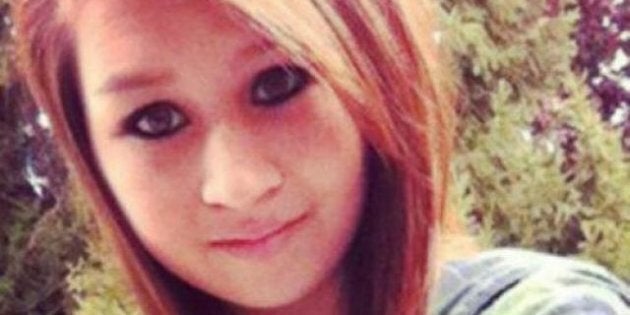
For years Facebook has maintained an imperious and stony silence against pleas from users and victims about its most objectionable content. Not a word when Amanda Todd took her life after being relentlessly stalked and blackmailed by a sexual predator on Facebook. Even the suicides of teens Rehtaeh Parsons and Audrie Pott (whose gang-rapes were posted to Facebook) brought no response from the $60 billion company.
But on May 27th, Facebook finally flinched. And then it cratered, caved and capitulated in the course of a single phone call after a one-week #fbrape campaign by the smartest feminists on the planet.
The Scent of a Dollar
In the end, it was all about the money.
WAM (Women Action Media), feminist Soraya Chemaly and Everyday Sexism in the UK took direct aim at Facebook's advertising revenue stream. They publicly showed major advertisers their own paid ads prominently displayed (Trigger Warning) on horrific rape-oriented Facebook pages. The most objectionable content can't ever be shown, but it includes graphic images of gore and horror, beaten children, naked children, women bound and gagged, or thrown down stairs. All supported by advertising dollars of the world's best-known brands.
It was too much for Nissan and the insurance giant Nationwide, which both pulled their ads immediately. Organizers then aimed a blistering barrage of social media messages to Dove, American Express, ZipCar and other brands, demanding that they too withdraw their ads. Twitter and Facebook were used to spread some 60,000 messages and 5,000 emails.
Followers of the campaign fanned out as if in a coordinated strategy. They disseminated the location of Facebook's upcoming shareholder meeting on June 11, and the names of all its major advertisers, including Disney and McDonalds.
Some tweeted at major financial writers for Bloomberg, the Wall Street Journal, Financial Times, the New York Times and others. Major business media and financial analysts were asked to comment on the potential damage to Facebook's share value if the advertiser exodus snow-balled. Others searched for and found a bottomless pit of violent rape-promoting content, all screen-capped on Facebook with major brand advertising. Then Amanda Todd's mother Carol and Rehtaeh Parson's father Glenford Canning joined the campaign.
Which Straw Broke the Camel's Back?
We won't ever know which straw broke the camel's back. It may have been the ruthless and caustic assault on Dove's Real Beauty brand, which suffered real damage when the company failed to respond. Or maybe it was the personal pressure on Sheryl Sandberg, currently promoting her soft feminist message book, Lean In.
Whatever it was, by the time Glenford Canning's moving blog post to Mark Zuckerberg appeared on Huffington Post, Facebook was on the phone to campaign organizers, agreeing to every term demanded from the outset.
Yet compared with many online campaigns, the #fbrape campaign was not that large, and failed to garner mainstream media attention until after the battle was won.
Why did Facebook move so swiftly to staunch the bleeding? To put it simply, it had to.
Advertising dollars are the octane that fuels Facebook. The #fbrape campaign organizers seized on the key paradox and gaping vulnerability in the advertising model. Although monetized like a titanic broadcast network, Facebook's content ethic is actually stuck on frat-boy setting. A striking mismatch exists between the chaos generated by a billion content up-loaders and the brand discipline demanded by multi-billion dollar advertisers.
No advertiser can risk having its brand associated with violent rape, gore, or child abuse porn, all of which are widely disseminated on Facebook by an army of trolls and goons.
Facebook's Back Against the Wall
On June 11th, the world's media will descend on San Francisco for Facebook's first shareholder meeting. Picture the PR disaster of them being met by a pandemonium of mothers brandishing giant placards of Rethaeh Parsons, Amanda Todd, and rape victims bound and gagged -- all displaying Facebook advertising by American Express and Dove. That's only one possible scenario of many.
The potential damage is breathtaking, and mainstream media would probably relish nothing more than a takedown of their Internet nemesis.
The WAM/EverydaySexism partnership grasped all of this. Facebook's back was against the wall, and both sides knew it. The #fbrape campaign was a spectacular act of free market political theatre, executed to perfection.
The future of course is unpredictable. Whether Facebook can actually assert the needed control over its site is far from certain. But the #fbrape campaign demonstrated that failure to do so can still inflict a mortal wound on the company.
On May 27th, women won the Internet.